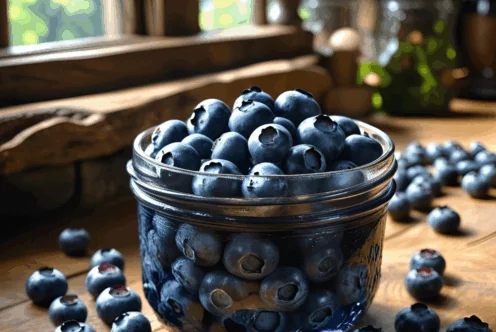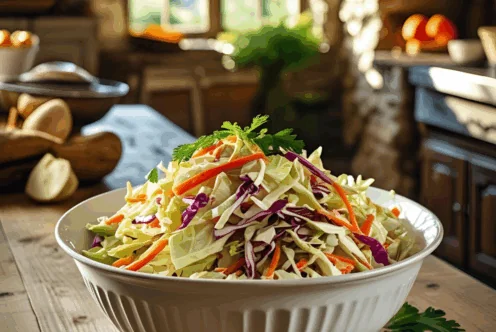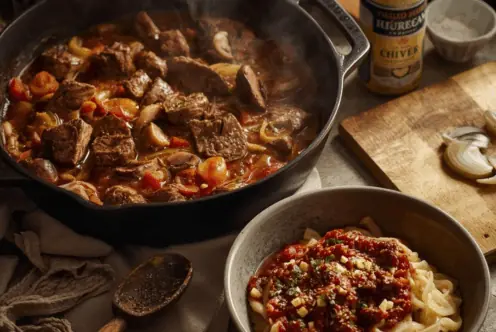Blog
Pork and Nutrition: Taste What Pork Can Do!

When building a healthy, nutrient-rich plate, pork delivers in ways that often go overlooked. While other proteins like chicken and fish get most of the spotlight, pork, especially lean cuts like tenderloin, loin chops, and sirloin roast, deserves a spot in your regular meal rotation. It’s delicious, satisfying, and a powerhouse of essential nutrients supporting overall health and wellness. Moreover, pork is increasingly recognized for its role in sustainable agriculture. Through the We Care® initiative, many Arizona pork producers actively work to minimize environmental impact and uphold ethical farming practices, making pork a responsible choice for conscious consumers who value health and sustainability.
And, the exciting news is the new campaign by the National Pork Board, Taste What Pork Can Do ™. This campaign is designed to highlight the complete protein that pork is on your plate.
A Complete Protein
Pork is a complete protein, providing all nine essential amino acids your body needs for muscle growth, tissue repair, and energy. These amino acids—histidine, isoleucine, leucine, lysine, methionine, phenylalanine, threonine, tryptophan, and valine—play crucial physiological processes. Leucine and isoleucine support muscle protein synthesis, lysine is vital for collagen production and calcium absorption, while methionine and tryptophan contribute to hormone balance and mood regulation. These building blocks make pork a superior protein source for maintaining overall health and optimizing physical performance. A 3-ounce pork tenderloin delivers about 22 grams of high-quality protein with only around 120 calories. That makes it comparable to skinless chicken breast—but with a deeper, savory flavor that can bring new life to everyday meals. For athletes, growing kids, or anyone focused on maintaining strength and stamina, pork is a smart, affordable fuel source that fits perfectly into an active lifestyle.
But the benefits don’t stop at protein. Pork is also an excellent source of vital micronutrients that help your body function at its best. Thiamine, also known as vitamin B1, supports your body’s ability to turn food into energy. Vitamin B6 and Niacin help regulate your metabolism and promote brain health. Zinc plays a crucial role in immunity, while selenium is a powerful antioxidant that supports thyroid function and protects cells from damage. These nutrients help you feel stronger, sharper, and more resilient.
Another benefit of pork is its role in supporting heart and brain health. The B vitamins found in pork, especially B12, are essential for brain function, mood stability, and the creation of red blood cells. Adequate intake of these vitamins helps improve mental clarity, fight fatigue, and maintain cognitive performance. Incorporating pork can be a simple way to maintain balance and vitality for those living active lifestyles or managing high-stress environments.
For those managing their weight, pork can also be a useful tool. Its protein content helps increase satiety, reducing the likelihood of overeating. Protein also supports muscle mass, which is key in maintaining a healthy metabolism. Swapping higher-fat or more processed proteins for lean pork cuts is a strategy that can help manage calorie intake while still delivering robust flavor.
Pork Is Fun to Cook
And the best part? You don’t have to sacrifice taste for nutrition. Lean pork cuts like tenderloin and loin chops are versatile and easy to prepare. Roast them with garlic and rosemary, slice them for a stir-fry, or grill them with a simple spice rub—no matter how you cook them, you’ll get great results. Want a weeknight win? Try a pork sirloin roast with sweet potatoes and Brussels sprouts for a complete one-pan dinner. Meal prepping? Cook a pork tenderloin in salads, wraps, or grain bowls every week on Sunday. Discover dozens of delicious pork recipes in our database—there’s something to suit every taste.
Cooking methods matter when maximizing pork’s nutrition. Skip the deep-frying and heavy sauces and opt for grilling, roasting, broiling, or air-frying. These techniques lock in flavor while keeping fat content low and nutrients intact. Use citrus, herbs, mustard, garlic, or vinegar-based marinades to enhance the flavor naturally without added calories or sugar.

Not all pork is created equal, and that’s a good thing. While fattier cuts like pork belly or spare ribs are best enjoyed in moderation, leaner cuts labeled “loin” or “tenderloin” offer maximum nutrition with minimal fat. These options are ideal for anyone looking to eat clean without giving up the comfort and richness that pork brings to the table.
Pork’s flexibility extends to any meal. Ground pork makes a flavorful base for tacos, lettuce wraps, or meatballs. Leftover roast pork can be transformed into protein-packed breakfast hashes or quick lunch sandwiches. Pork adapts, no matter your cooking style or schedule, making it an ideal staple for families, fitness enthusiasts, and anyone who enjoys real food with real benefits.
One of pork’s unsung values is its ability to fit into culturally diverse cuisines. Whether it’s a Vietnamese lemongrass pork chop, a Cuban-style mojo pork roast, or a Southern pulled pork sandwich, pork easily adapts to global flavors. This makes it perfect for families exploring new recipes while keeping meals nutritious and affordable.
And let’s talk about kids—pork is a family-friendly food. Its mild flavor and tender texture make it a hit with even the pickiest eaters. Ground pork can easily be added to pasta sauce, lasagna, or taco night for a kid-approved twist. Plus, it gives parents peace of mind knowing they’re serving a balanced meal that supports healthy growth and development.
If you are meal prepping, pork provides even more advantages. A single roast or tenderloin can yield multiple meals throughout the week—salads, wraps, stir-fries, and soups all benefit from the added protein and flavor. With food prices rising and time at a premium, pork helps deliver maximum impact with minimum effort.
Pork Production in Arizona
In Arizona, pork producers are committed to raising high-quality pork with sustainability and nutrition in mind. Our local farmers understand the value of producing a clean, nutritious product that supports the health of families and communities. You’re fueling your body and supporting Arizona’s robust agriculture industry by choosing Arizona pork.
Arizona’s pork industry, while smaller compared to major pork-producing states like Iowa or North Carolina, plays a significant role in the state’s agricultural economy, contributing approximately $41 to $50 million annually, according to USDA-NASS data. The industry has a rich history, with a notable expansion in the 1970s, and today it combines a mix of small- to medium-sized family-owned farms, one major commercial operation, and niche producers catering to local markets.
Historical Context:
Pork production in Arizona has a storied tradition, with farms historically spread across all four corners of the state. While the number of producers has consolidated over time, the legacy of family-owned operations persists, alongside one major commercial farm in Navajo County.
Community Engagement:
The Arizona Pork Council actively promotes pork’s nutritional value and supports producers in connecting with consumers. Events like radio segments on Rosie on the House highlight the industry’s contributions, featuring farmers like Kevin Gary Rogers and others.
Low Carbon Footprint:
Pork production accounts for less than 0.3% of U.S. greenhouse gas emissions, a figure supported by the American Farm Bureau. Over the past six decades, advancements in genetics, nutrition, and animal care have reduced land use by 75.9%, water use by 25.1%, and carbon emissions by 7.7% per pound of pork produced.
Efficient Resource Use:
Modern practices, such as precision feeding and improved genetics, have decreased the feed required to produce a pound of pork from 4.5 pounds in 1960 to 3 pounds today. This efficiency reduces environmental strain and conserves resources like water and land.
Manure Management:
Arizona’s commercial operations, like Yosemite in Snowflake, use concrete slatted floors to manage waste, which is flushed into lagoons for treatment, minimizing environmental impact compared to traditional methods.
Commercial Operations:
Arizona’s primary commercial pork operation, Yosemite Farms, located on 3,800 acres north of Snowflake, employs 140 people and produces approximately 250,000 pigs annually. This facility uses modern, climate-controlled housing to ensure animal health and safety.
Niche and Local Markets:
Small-scale producers, such as the Meat Shop in Phoenix, focus on direct-to-consumer sales. These operations complement larger farms by meeting local and specialty market needs.
A Winning Choice
At a time when more families are looking for affordable, nutrient-dense protein options, pork stands out as a winning choice. It’s inexpensive, versatile, and brimming with nutrients that keep you strong, satisfied, and energized. And when you choose locally raised pork from Arizona farmers, you’re investing in your health and community.
The nutritional benefits of pork are also gaining more attention in clinical nutrition and health settings. Many dietitians recommend lean pork cuts as part of high-protein diets to manage chronic conditions like diabetes and high blood pressure. Because pork is rich in potassium and low in sodium, it supports heart health and helps balance fluids in the body. Studies have shown that diets including lean pork can improve blood pressure control and cardiovascular outcomes.
Let’s not forget that pork is also an excellent option for older adults. Maintaining muscle mass becomes increasingly important as people age to prevent frailty and loss of mobility. Pork’s high protein density and soft texture when cooked properly make it an ideal option for seniors looking to meet their protein needs without chewing difficulty or digestive strain. Combined with its B-vitamin content, pork helps support energy, mobility, and overall quality of life.
So, how can you start if pork isn’t a staple in your kitchen? Begin with simple swaps: replace ground beef with pork in meatballs, tacos, or chili. Try a marinated pork loin instead of chicken for your next Sunday roast. Look for pork cuts labeled “loin” or “tenderloin” at your local grocery store or butcher for the leanest, most nutrient-rich options. And don’t forget to support local by choosing pork sourced from Arizona farmers when available.
You can also explore pork’s role in balanced plates by combining it with whole grains like brown rice, quinoa, or farro, and adding roasted vegetables or leafy greens. This approach maximizes nutritional benefits and creates colorful, satisfying, healthy, hearty meals.
In the end, pork isn’t just another protein on your plate—it’s a nutrition-packed, budget-friendly, an Arizona-grown solution to better meals and health. It fits seamlessly into modern lifestyles, offering flexibility, flavor, and real nourishment for every stage of life.
So, the next time you build your grocery list or plan meals for the week, ask yourself: What can pork do? The answer is simple, a lot. It can fuel your body, support your health, strengthen your community, and help shape a more sustainable food future.
Taste What Pork Can Do ™ — you’ll taste the difference on your plate.
By Joel Carr, Arizona Farm Bureau Strategic Communications Manager, and Julie Murphree, Strategic Communications Director


















